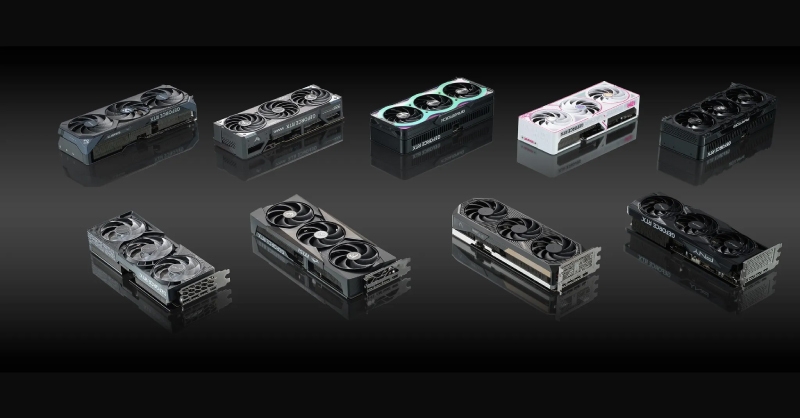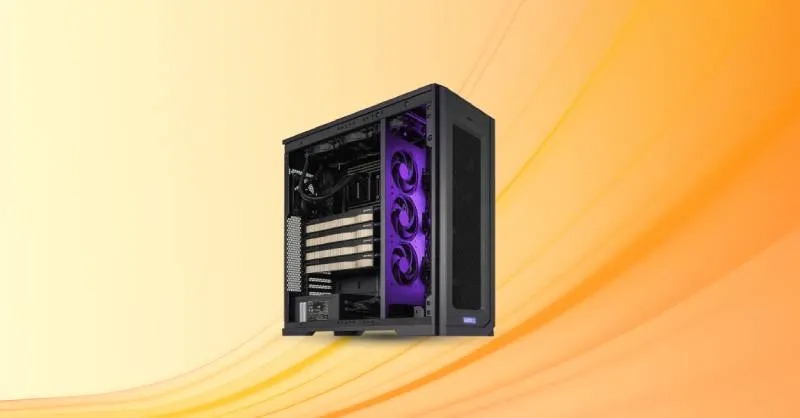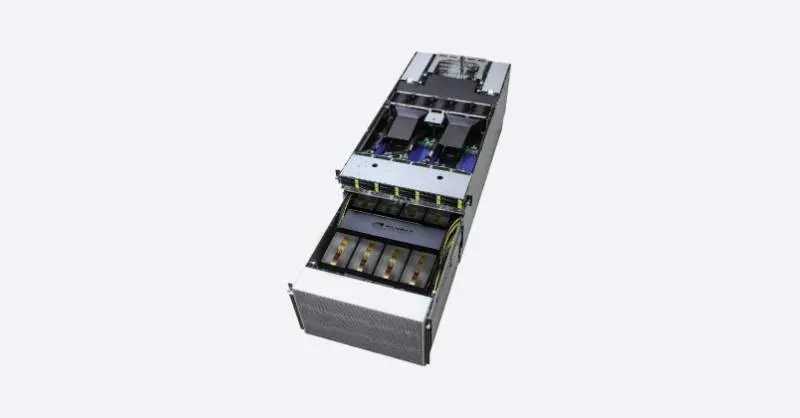Introduction
NVIDIA designs its GPUs for different levels of computing needs. Each lineup is built with a specific audience and workload in mind, from gaming to professional workloads and mission-critical data center operations.
We will define the three NVIDIA GPU lineups for their target audience and recommended workloads. The three major GPU lineups are NVIDIA GeForce RTX, NVIDIA RTX PRO, and NVIDIA Data Center GPUs.
What is GeForce RTX – Performance for Gaming and Creators
The NVIDIA GeForce lineup targets the consumer market for gaming, creatives, and AI hobbyists. It’s optimized for real-time rendering and visual performance, making it the most accessible entry point into NVIDIA’s ecosystem.
NVIDIA GeForce RTX GPUs strike a balance between affordability and performance, giving users a capable platform for both entertainment and light compute workloads. They feature less VRAM than professional cards since their workloads often do not necessitate more than 24GB of VRAM.

Current Generation:
- GeForce RTX 50 Series, built on NVIDIA’s Blackwell architecture with up to 32GB of GDDR7 VRAM in the RTX 5090.
- Delivers improved ray tracing, DLSS 4, and higher performance-per-watt compared to last generation RTX 40-series.
Key Highlights:
- Real-time rendering: Achieves realistic visuals with advanced lighting and shadow effects.
- AI-powered upscaling: DLSS and Frame Generation enhance frame rates while maintaining image quality.
- Compute flexibility: Supports CUDA, Tensor, and RT Cores for lightweight AI training, simulations, rendering, or other CUDA based professional workload.
- Thermal efficiency: NVIDIA delivers GeForce RTX in a Founders Edition and Board Partner designs (ASUS, MSI, GIGABYTE, etc.) featuring large heatsinks and cooling solutions to push overclocked memory and GPU clock speeds.
Example Workloads:
- High-refresh gaming and VR applications.
- RTX 5090 and 5080 are great for 4K High Refresh Rate gaming, 3D modeling, animation, and many other professional workloads.
- The RTX 5090 is amazing for running small-scale AI experiments or local LLMs
- RTX 5070 Ti and below are more value gaming focused
NVIDIA RTX PRO Lineup – Precision for Professional Workloads
The RTX PRO lineup is purpose-built for professionals who rely on accuracy, stability, and certified performance. It bridges the gap between consumer-level GPUs and enterprise hardware, delivering workstation-grade reliability for visualization, simulation, and design workloads.
RTX PRO GPUs deliver consistent performance with the reliability professionals need to keep projects moving without interruptions. They often use the same GPU die as the GeForce RTX models but feature stable ECC memory, more modest clock speeds, higher VRAM capacity, and validated drivers. Sometimes, the equivalent NVIDIA RTX PRO GPU can feature an unlocked GPU die with increased CUDA Cores.

Current Generation:
- NVIDIA RTX PRO Lineup is a new naming convention and is powered by the Blackwell architecture. Previously labeled as RTX and before that, Quadro.
- NVIDIA RTX PRO Blackwell features improved AI acceleration, rendering speed, and VRAM capacity with up to 96GB of GDDR7 in the RTX PRO 6000 Blackwell.
Key Highlights:
- ECC memory: Ensures data accuracy and prevents computational errors during design and simulation.
- Certified drivers: Optimized for leading software like Autodesk, Dassault Systèmes, Ansys, and Siemens, and more
- AI and rendering power: Tensor and RT cores accelerate photorealistic rendering and AI-assisted workflows.
- High VRAM capacity: Handles large datasets for complex projects such as 3D assemblies or multi-layered visual effects.
Example Workloads:
- CAD design, FEA, and CFD simulations used in engineering and manufacturing.
- 3D animation, visual effects, and compositing for film and media.
- Architectural visualization and digital twin environments.
NVIDIA Data Center Lineup – Scalable Acceleration for AI and HPC
NVIDIA’s Data Center GPUs are designed for large-scale compute environments that power AI training, inference, and scientific computing. These GPUs combine massive parallelism, high memory bandwidth, and interconnect technologies to enable seamless multi-GPU scaling.
NVIDIA Data Center GPUs provide the compute foundation behind modern AI infrastructure. These GPUs are for enterprise workloads that value performance in specific applications.

NVIDIA GPUs Lineup Explained - GeForce vs RTX PRO vs Data Center
- NVIDIA H200 NVL: Hopper-based GPU optimized for LLM training and inference with expanded HBM3e memory.
- NVIDIA HGX B200 / B300: Blackwell-based platforms designed for AI factories and exascale HPC workloads.
Key Highlights:
- Unified GPU clusters: NVLink and NVSwitch enable multi-GPU communication and shared memory access. The H200 NVL uses NVLink Bridges whereas the NVIDIA HGX H200/B200/B300 use an integrated NVLink Switch with up to 1.8TB/s of GPU-to-GPU bandwidth.
- HBM3e memory: HBM memory offers extreme bandwidth for large model training and data-heavy scientific workloads. The NVIDIA HGX B300 features 270GB of HBM3e memory and upwards of 7.7TB/s of memory bandwidth.
- Scalability: Supports deployment across supercomputers, cloud infrastructure, and enterprise data centers. Connect multiple NVIDIA Data Center GPUs with highspeed networking like InfiniBand and NVLink Switches.
Example Workloads:
- Training, fine-tuning, and deploying state-of-the-art AI models like GPT, Claude.
- HPC workloads such as molecular dynamics, climate modeling, and computational fluid dynamics.
- Enterprise-scale inference, data analytics, and AI-driven research.
Frequently Asked Questions
1. What’s the main difference between GeForce and RTX PRO GPUs?
GeForce focuses on gaming and creative workloads, while RTX PRO GPUs are optimized for professional applications that require certified drivers, ECC memory, and higher reliability.
2. Can a GeForce GPU be used for professional workloads?
Yes, but without software certifications and ECC support, performance may not be consistent for CAD, simulation, or visualization workloads. RTX PRO GPUs are the recommended choice for those environments.
3. How do NVIDIA Data Center GPUs differ from workstation GPUs?
Data Center GPUs are designed for large-scale parallel computing. They include HBM memory, NVLink interconnects, and power profiles optimized for multi-GPU or cluster deployment, not individual desktops.
4. Which NVIDIA GPU is best for AI training?
For small models or experimentation, a GeForce RTX 5090 or 5080 works well. For enterprise-scale training, GPUs like the H200 NVL or HGX B200 are purpose-built for LLMs and data-intensive AI workloads.
5. What connects the different NVIDIA GPU lineups?
All NVIDIA GPUs share a common CUDA architecture, allowing developers to scale their code from a desktop GPU to massive multi-node data center deployments with minimal changes.
Conclusion
NVIDIA’s GPU lineup scales from consumer desktops to the world’s fastest AI supercomputers. Each product family serves a specific purpose—GeForce for gamers and creators, RTX PRO for professionals who demand precision, and Data Center GPUs for enterprise AI and HPC workloads.
By choosing the right GPU, users can match their performance and memory needs to their workload, whether that’s rendering a 3D scene, simulating an engine design, or training a trillion-parameter model. NVIDIA’s unified architecture ensures every GPU generation delivers faster compute, higher efficiency, and smarter acceleration.


